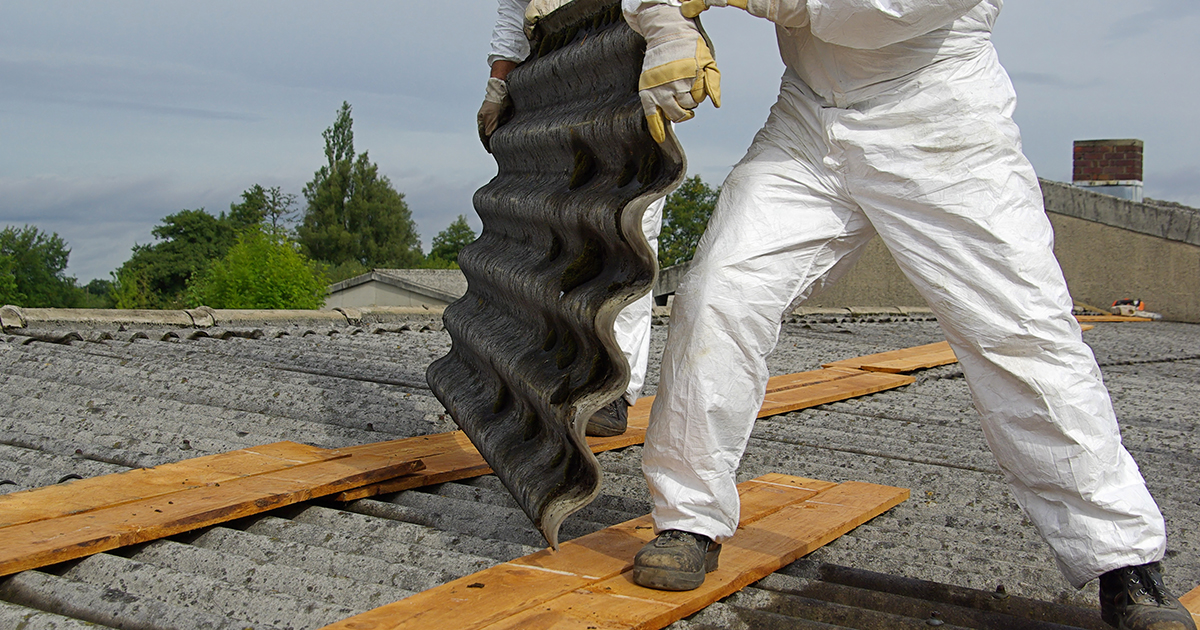Asbestos Cement Removal: A Comprehensive Guide to Ensuring Safety and Compliance

This post is a basic guide on asbestos cement removal. Asbestos has long been recognised as a hazardous due to its harmful effects on human health. It was commonly used in construction for its fire-resistant and insulating properties.
Here we will look at the importance of asbestos cement removal, the potential risks associated with asbestos exposure, and the necessary steps to ensure safety and compliance during the removal process. By following the guidelines outlined here, you can protect yourself, your workers, and the environment from the dangers of asbestos.
Understanding Asbestos Cement
Asbestos cement is a composite material made of cement reinforced with asbestos fibres. It was widely used in the construction of buildings, roofs, pipes, and other products until its ban in many countries due to health concerns. Asbestos cement may be present in various forms, including corrugated sheets, flat sheets, pipes, and guttering.
The Risks of Asbestos Exposure
Exposure to asbestos fibres can have severe health implications. When disturbed, asbestos releases microscopic fibres into the air, which can be inhaled and embedded in the lungs. Over time, these fibres can cause inflammation, scarring, and various respiratory diseases.
The risks of asbestos exposure depend on several factors, such as the duration and intensity of exposure and individual susceptibility. It is crucial to take the necessary precautions when handling asbestos cement to minimise the risk of exposure.
The Importance of Asbestos Cement Removal
Asbestos cement in good condition and left undisturbed is generally considered safe. However, when asbestos-containing materials deteriorate or are damaged during renovation or demolition, they pose a significant risk. Disturbed asbestos can release harmful fibres into the air, endangering the health of anyone nearby.
The removal of asbestos cement is essential for several reasons:
- Health and Safety: Removing asbestos cement eliminates the risk of exposure to harmful fibres, safeguarding the health and well-being of occupants and workers.
- Legal Compliance: Many countries have strict regulations regarding asbestos management and removal. Adhering to these regulations ensures legal compliance and avoids potential fines or penalties.
- Property Value: Properties containing asbestos are generally considered less desirable. By removing asbestos cement, you increase the value and marketability of your property.
Asbestos Cement Removal Process
Removing asbestos cement requires meticulous planning, professional expertise, and strict adherence to safety protocols. The process generally involves the following steps:
Risk Assessment and Survey
Before initiating any removal work, a comprehensive risk assessment and asbestos survey should be conducted. This assessment helps identify the location, condition, and extent of asbestos-containing materials within the property. A qualified asbestos surveyor can perform this task to ensure accuracy and compliance with regulations.
Developing a Removal Plan
Based on the findings of the asbestos survey, a detailed removal plan should be developed. The plan should outline the specific procedures, safety measures, and protective equipment required for removal. Engaging experienced and licensed asbestos removal contractors to execute the plan is crucial.
Asbestos Removal
During the removal process, the asbestos cement must be handled with extreme care to prevent the release of fibres. The removal team will typically use encapsulation, wet stripping, or other specialised techniques to minimise fibre dispersion. All workers should wear personal protective equipment (PPE) to ensure safety.
Waste Disposal
Asbestos waste is hazardous and requires proper containment and disposal. The rubbish must be double bagged in approved asbestos waste bags and labelled accordingly. Specialised waste containers should be used to prevent any leakage or fibre release. The disposal of asbestos waste should strictly adhere to local regulations and guidelines.
Air Monitoring and Clearance
After the removal process, thorough air monitoring should be conducted to ensure the absence of asbestos fibres in the surrounding environment. A certified analyst will collect and analyse air samples in an accredited laboratory. If the results meet the required clearance levels, a certificate of reoccupation can be issued.
Ensuring Safety and Compliance
To ensure the highest level of safety and compliance during asbestos cement removal, consider the following measures:
- Engage Professionals: Asbestos removal should only be undertaken by licensed and experienced professionals who follow industry best practices.
- Training and Certification: Ensure that all personnel involved in the removal process receive appropriate training and certification to manage asbestos safely.
- Proper Equipment: Provide workers with suitable personal protective equipment (PPE), including disposable coveralls, gloves, respiratory masks, and eye protection.
- Regulatory Compliance: Stay up to date with local regulations and guidelines about asbestos management and removal to ensure full compliance.
- Regular Inspections: Conduct periodic inspections to identify any potential asbestos risks and address them promptly.
Asbestos cement removal is a critical process to protect individuals from the hazardous effects of asbestos exposure. By understanding the risks associated with asbestos and following the necessary safety precautions, you can ensure the well-being of everyone involved. Always rely on professional asbestos removal services to conduct the process efficiently and comply with regulations.



